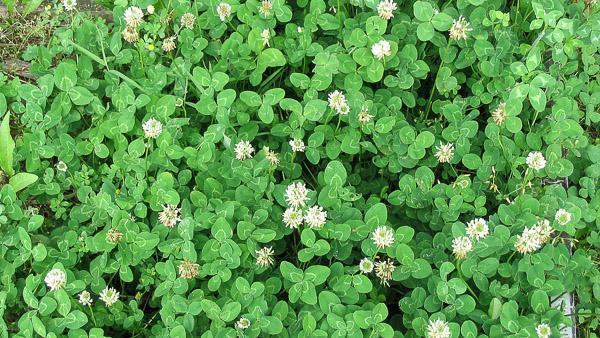Management in lawns
Did you know at one time white clover was included in turfgrass seed mixes? It takes nitrogen from the air, converts it to a form plants can use, and eventually releases it back into the soil, lessening the need to fertilize. The white flowers also support some important pollinators. So as complete eradication in lawns is not practical; either accept it or aim for limiting the spread.
Maintain healthy, dense turf that can compete and prevent weed establishment.
Lawn Care
Mechanical management
Hand pulling or using an appropriate weeding tool are the primary means of mechanical weed control. Hand pulling is difficult in lawns because of its creeping growth pattern but can slow the spread. This is a viable option at the beginning of an infestation and on young weeds. Hand pulling when the soil is moist makes the task easier.
Manage Weeds Without Chemicals
Chemical treatment in lawns
If you choose this option, spot treat weeds with a liquid, selective, postemergent, broadleaf weed killer applied when weeds are actively growing. Look for a product with one or more of the following active ingredients: 2, 4-D, MCPP(mecoprop), Dicamba*, or Triclopyr.
*Do not spray herbicides containing dicamba over the root zone of trees and shrubs. Roots can absorb the product possibly causing plant damage. Refer to the product label for precautions.
Lawn Herbicides for Weed Management
